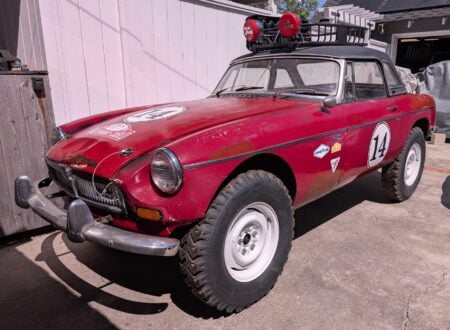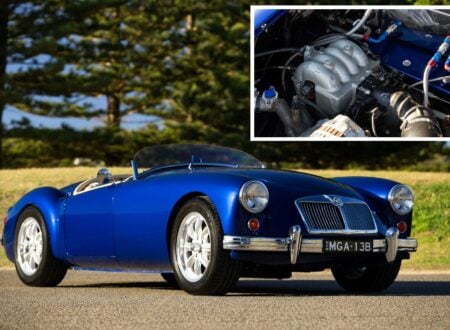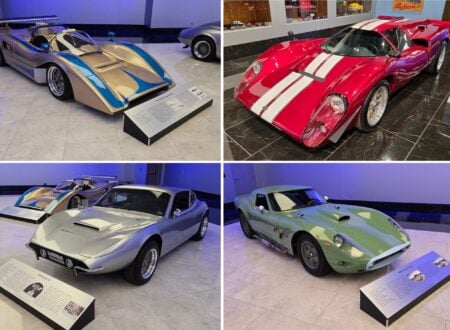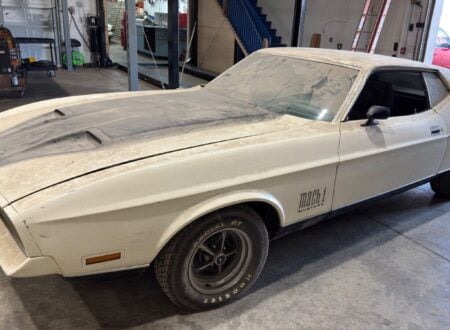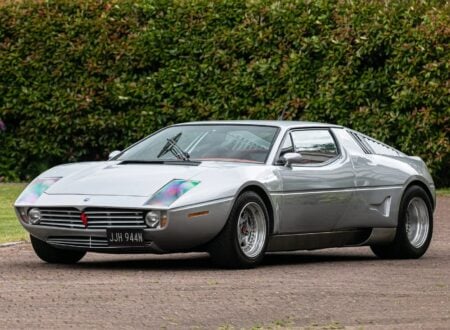This is a Tim Burton-era Batmobile replica built in Italy using locally sourced parts, including the engine and transmission from a Fiat 126. Of course, the size of this car is far smaller than the original, but it can still carry two adults side-by-side.
Few people who saw the original two Tim Burton Batman films left the cinema without a strong desire to own, or at least drive, their own jet-powered Batmobile around Gotham City. For some the desire was strong enough that they actually went and built a replica, some of which were Corvette C4-based.
Above Video: This is a highlights supercut showing a number of the Batmobile scenes in Batman (1989), the first Tim Burton Batman film.
The Burton Batmobile
The original 1989 Batmobile, often called the Burton Batmobile after the film’s director Tim Burton, was actually developed by a British team in England. This team included Anton Furst as production designer and Julian Caldow as concept illustrator for the Batmobile.
The car was designed initially in a series of sketches, with Tim Burton providing guidance. Once the final sketches were settled a small scale model was made, and after this concept was finalized they moved on to a full-scale polystyrene model.
It would be this polystyrene model that then formed the fiberglass mold, and the Batmobile truly took shape for the first time. It was decided to base the car on a Chevrolet Impala chassis, which needed to be cut and extended to fit the relatively long 141 inch wheelbase – that’s over 3.5 meters.
Power was provided by the Impala V8 which sent power to the rear wheels via an automatic transmission. This was how the car actually drove, but of course in the film it was said to be powered by a jet engine with an afterburner.
Some jet engine parts were actually used in the construction of the car, including from a Rolls-Royce jet engine and a Harrier Jump Jet. The vehicle was fitted with a gas burner in the rear, to simulate the function of the afterburner.
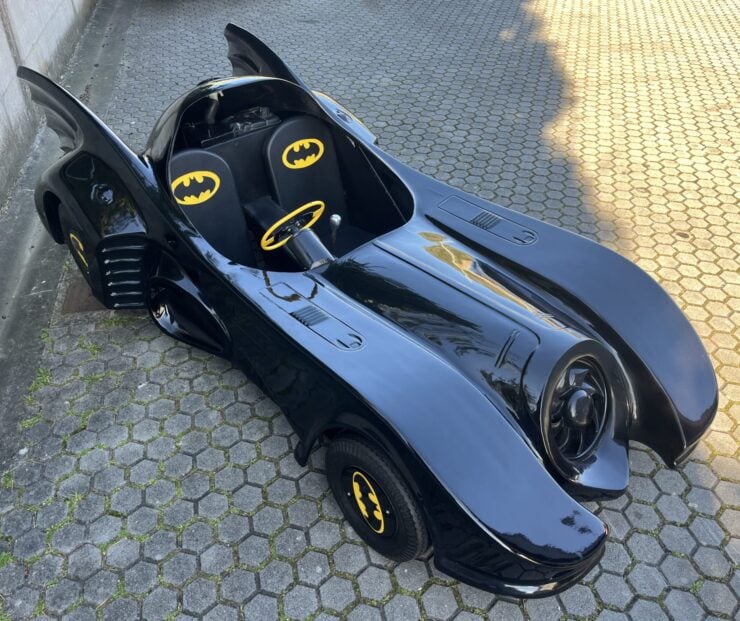

The Batmobile was also fitted with a number of prop weapons and Bat devices including Browning machine guns, a gas-powered grappling hook, side-mounted disc launchers, and chassis-mounted shin-breakers.
Two Batmobiles were built for the film, and they were used in both Batman (1989) and Batman Returns (1991). There were an additional three cars built from the mold, these were used for promotional purposes around the time of each film’s release, and one of them now lives in the Petersen Museum in Los Angeles.
A number of replica Burton Batmobiles have been built over the years, some more accurate than others, and all used fiberglass bodies just like the originals.
The Italian Batmobile Shown Here
What do you do if you live in Italy but you find yourself powerless in the face of a burning desire to build yourself a Burton Batmobile? For at least one enterprising enthusiast the answer was simple, buy a Fiat 126, strip it for parts, and get to work.
A tubular steel chassis was fabricated and a Burton Batmobile-inspired body was molded from fiberglass. The Fiat 126 engine and transmission was installed, and given the presumably low weight of the car it would likely be quite quick off the line, the Fiat 126 engine is a 652cc inline-twin.
The car has two padded seats with Batman logos applied, it also has black wheel covers on all four wheels carrying the same logo. The steering yoke is yellow, and it’s been built in right-hand drive configuration with a simple dashboard carrying only the essential switches and lights.
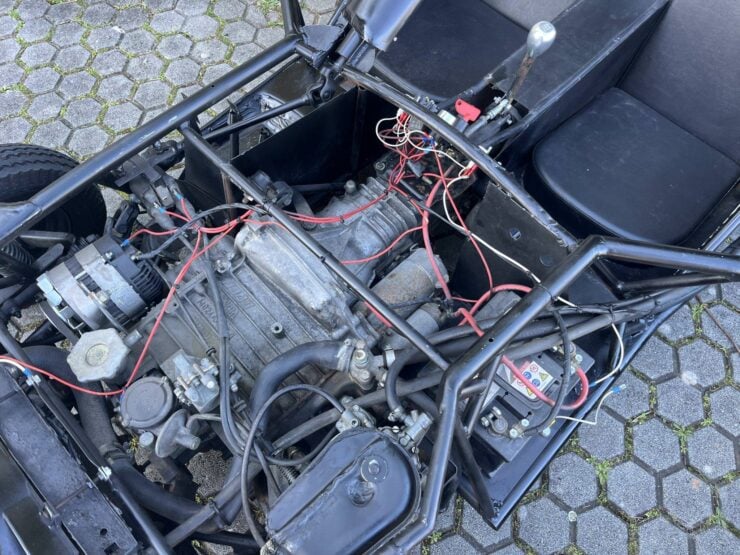

It measures in at approximately 280cm (110″) long, 140cm (55″) wide, and 85cm (33″) tall. It has rack-and-pinion steering, coil spring front suspension, a live axle rear with a transverse leaf, drum brakes, and 10″ wheels.
It’s now being offered for sale out of Florence, Italy on Bring a Trailer on dealer consignment at no reserve with a bill of sale. If you’d like to read more about it or register to bid you can visit the listing here.
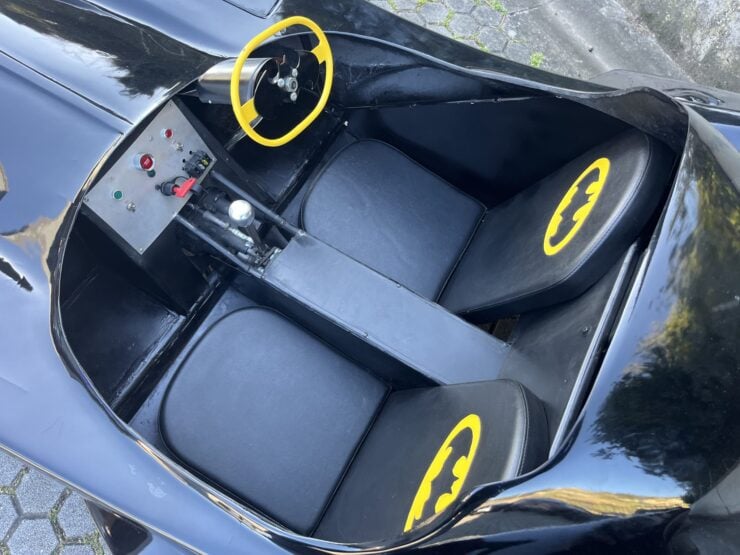
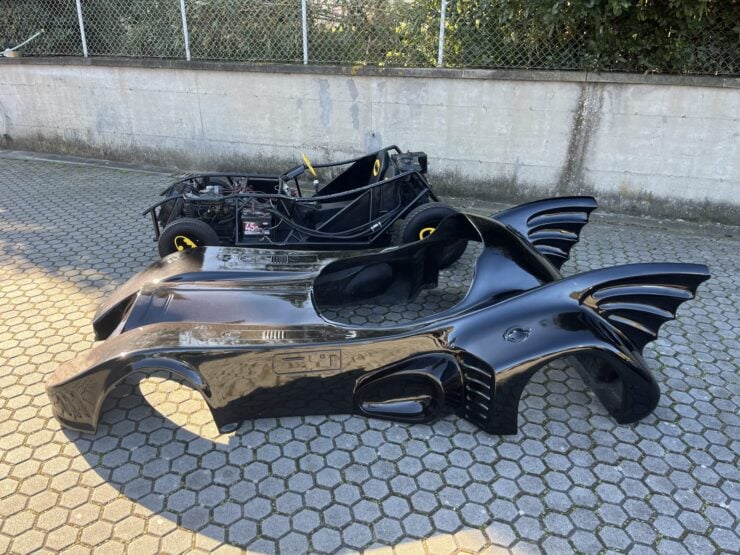
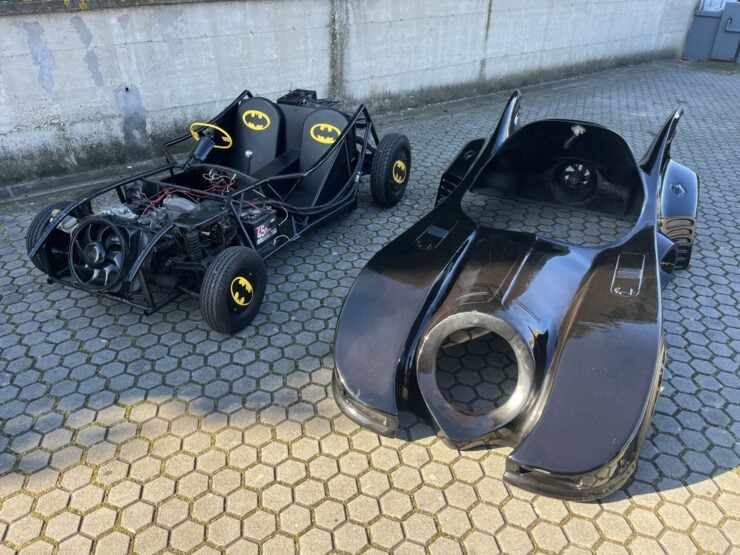
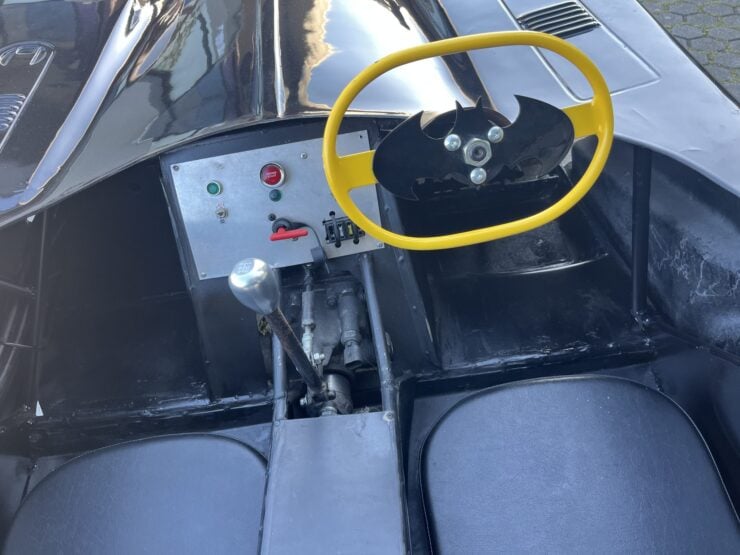
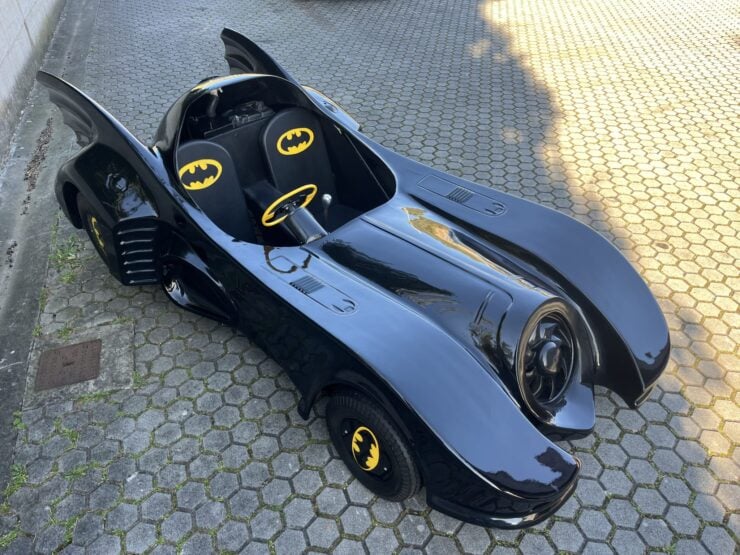
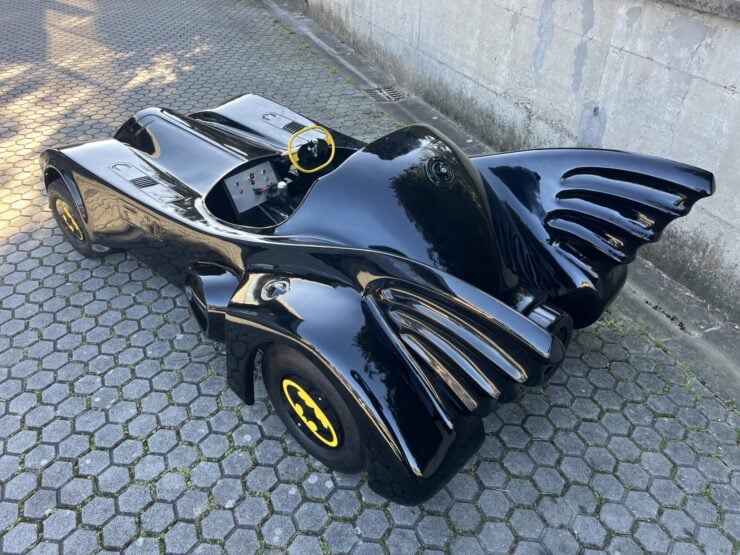
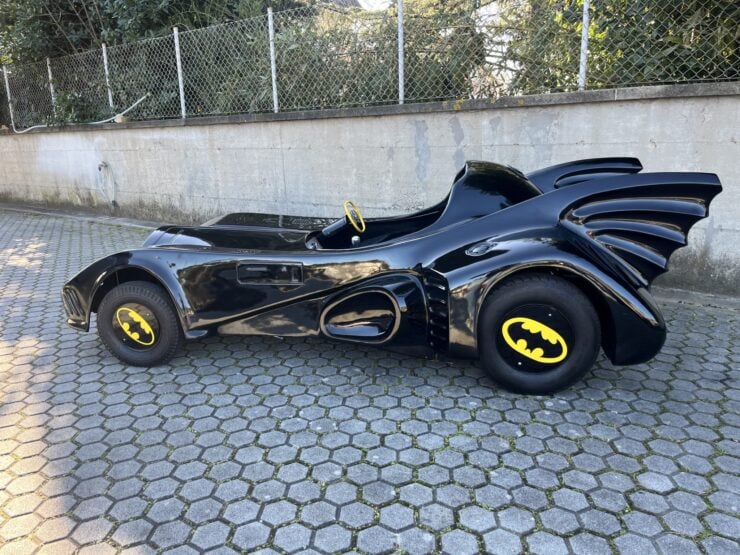
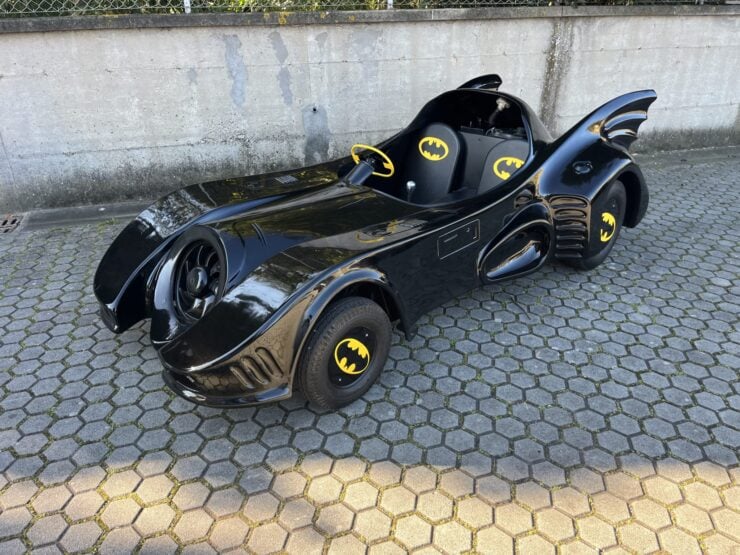
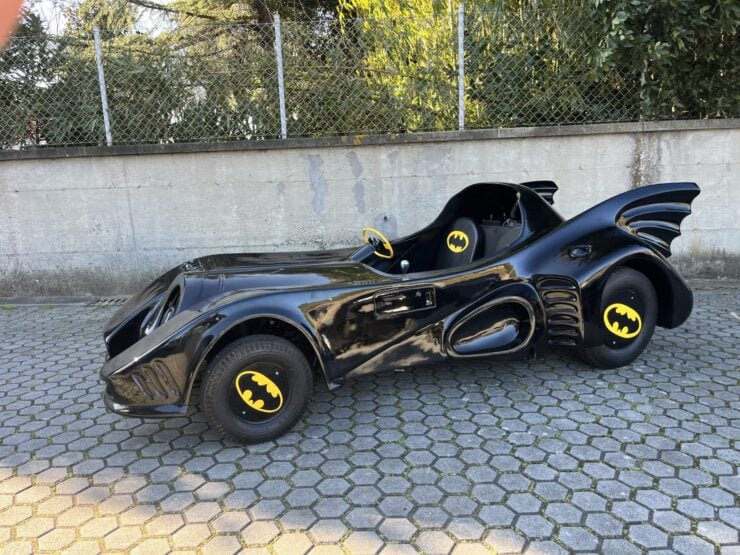

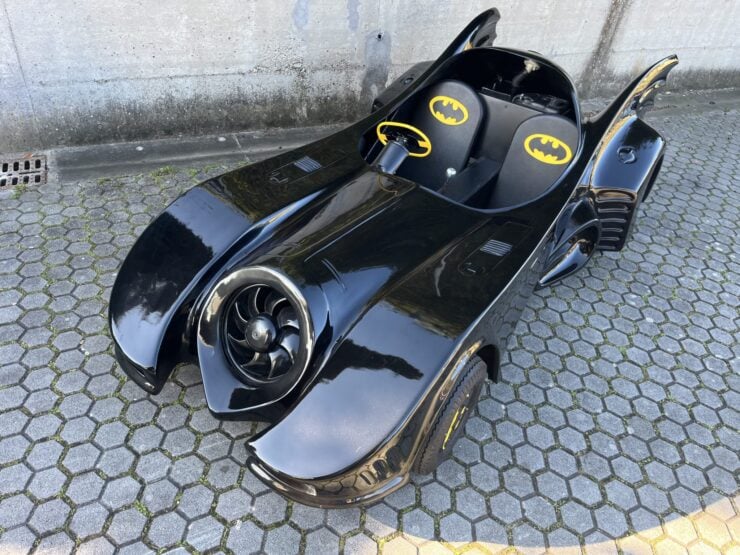
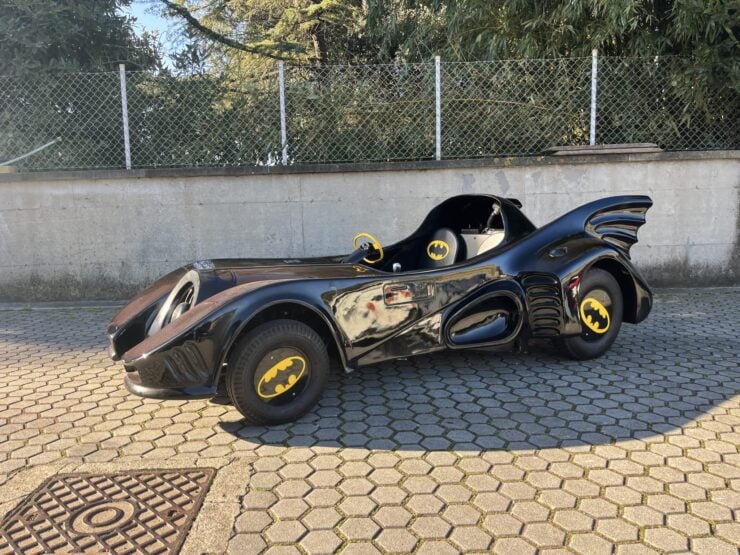
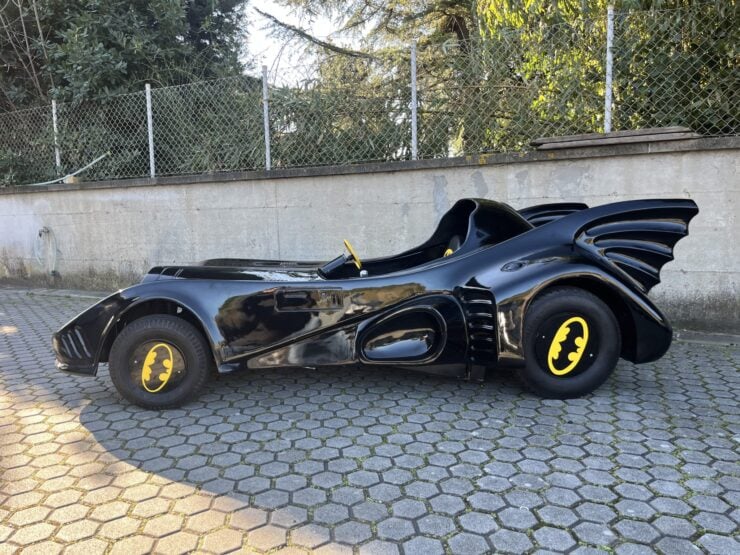

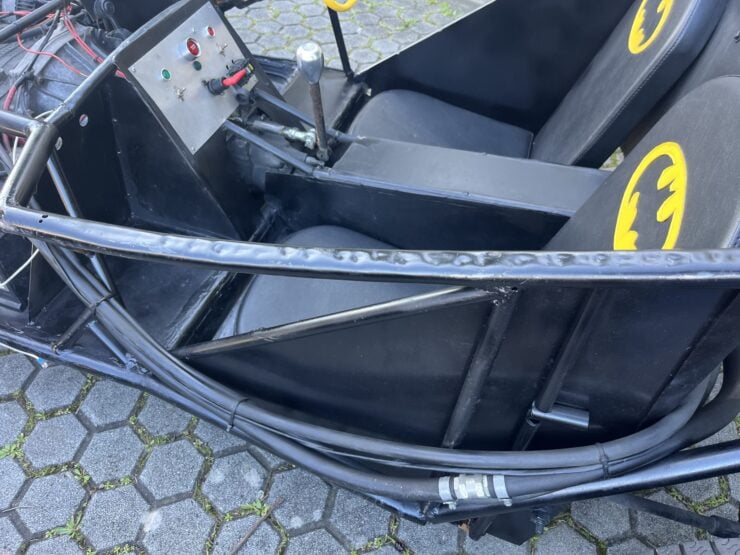
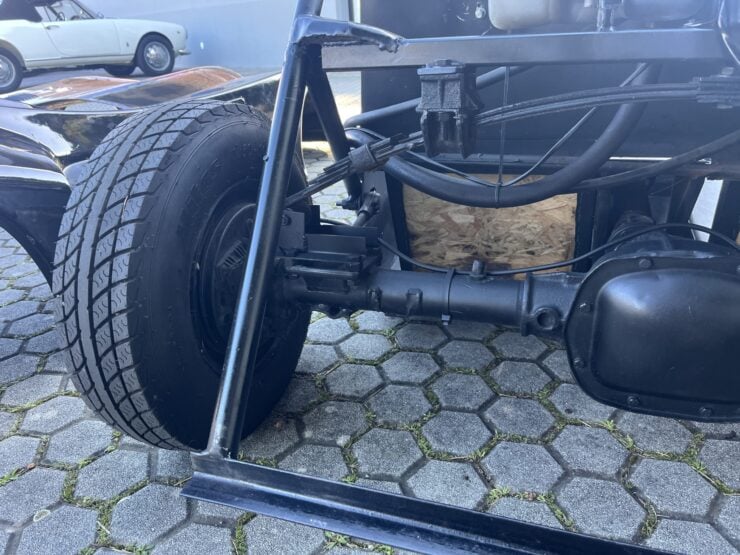
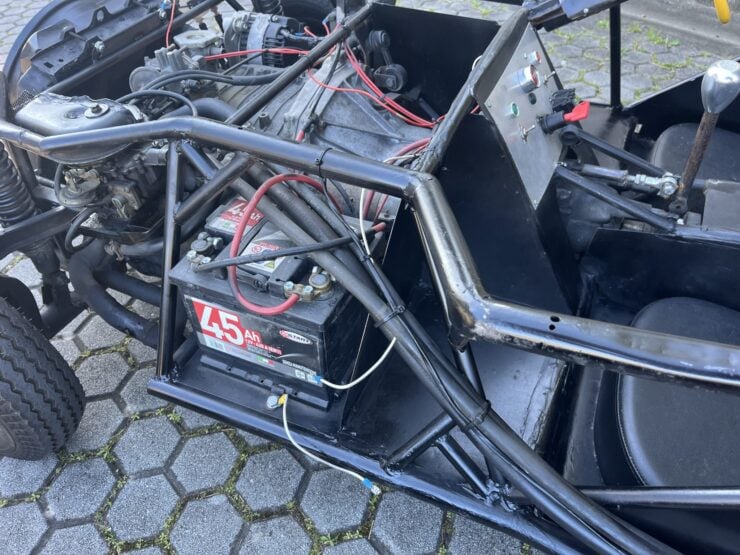
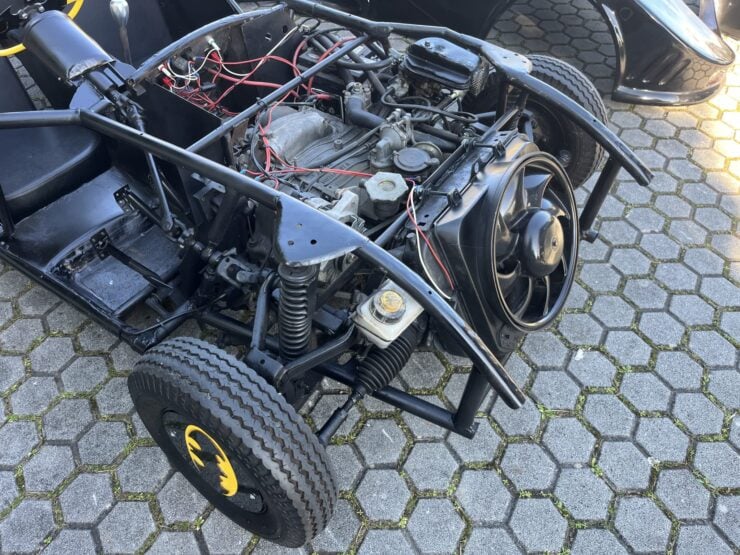
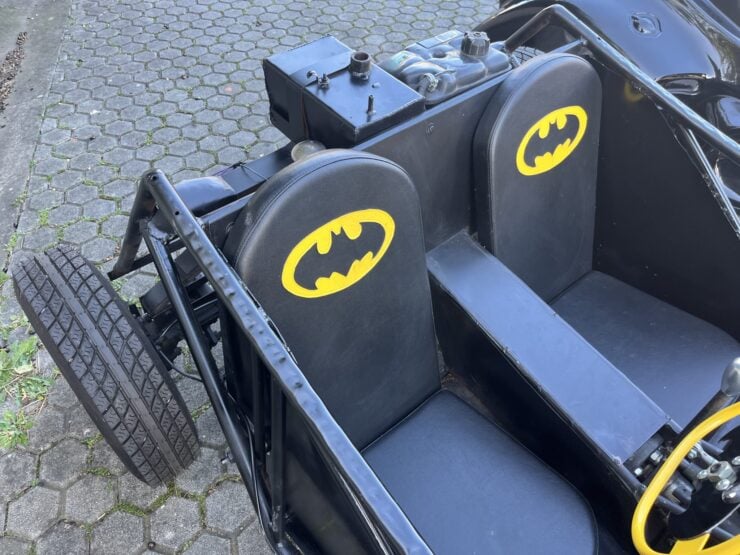
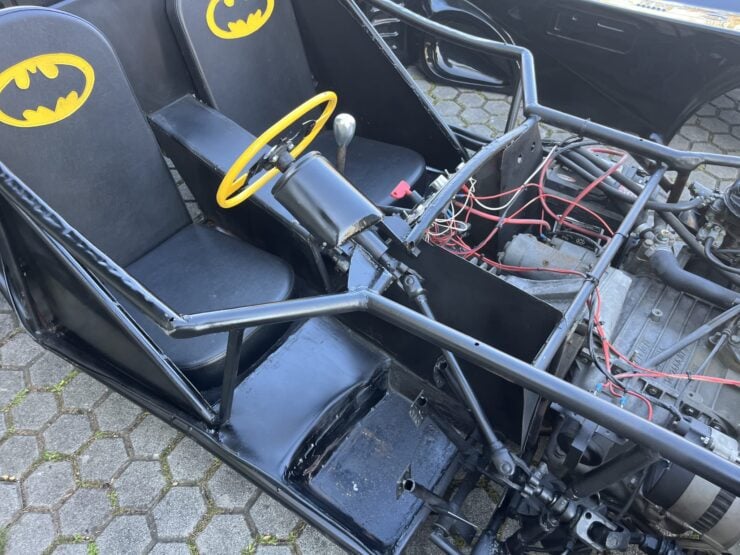
Images courtesy of Bring a Trailer



